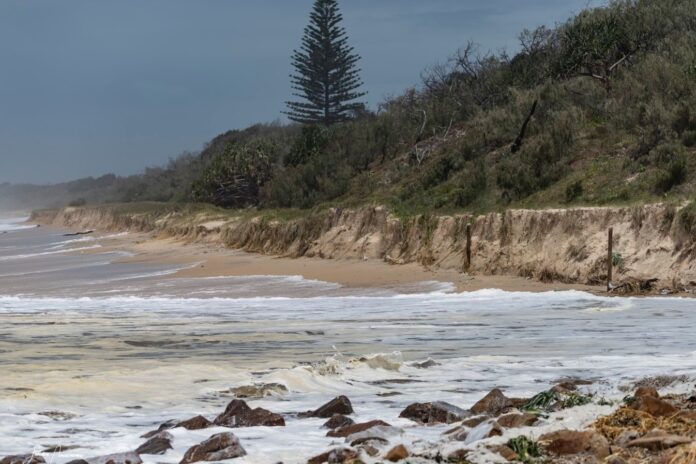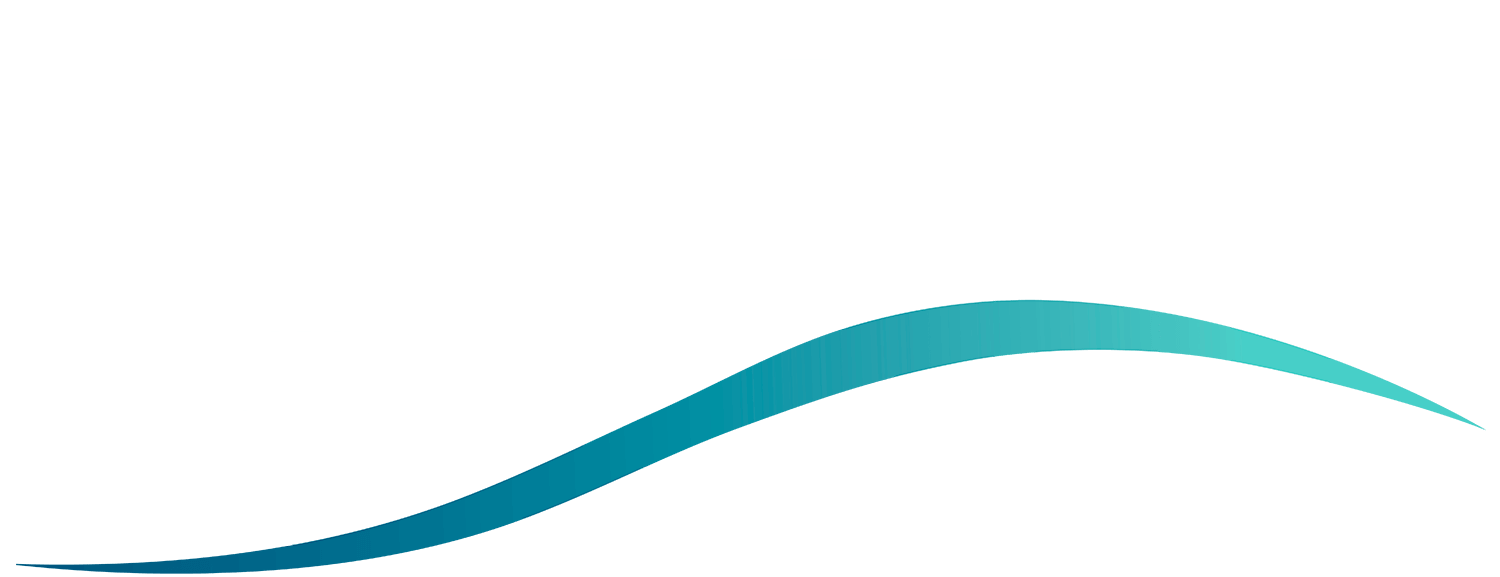The recovery phase is underway along Sunshine Coast beaches smashed by ex-Tropical Cyclone Alfred.
Kilometres of coastline were pounded by a storm surge, strong winds and heavy rain for days.
The event caused significant erosion at several locations, most notably at Yaroomba, Maroochydore, Kings Beach and along the exposed Kawana stretch.
There are concerns that access to lifesaving towers could be compromised, while a seawall at Moffat Beach is showing signs of movement with the threat of falling rocks.
A Sunshine Coast Council spokesperson said the wild weather had reshaped many local beaches.
“Erosion caused by ex-TC Alfred has weakened the dunes at numerous locations along our shoreline, creating steep drop-offs,” they said.
Want more free local news? Follow Sunshine Coast News on Facebook, LinkedIn and Instagram, and sign up for our FREE daily news email.
“A lot of debris and fallen trees have ended up over pathways, steps and beach accesses.
“There has also been some landslips and minor damage to boat ramps.
“There is also a significant amount of debris in our waterways.”
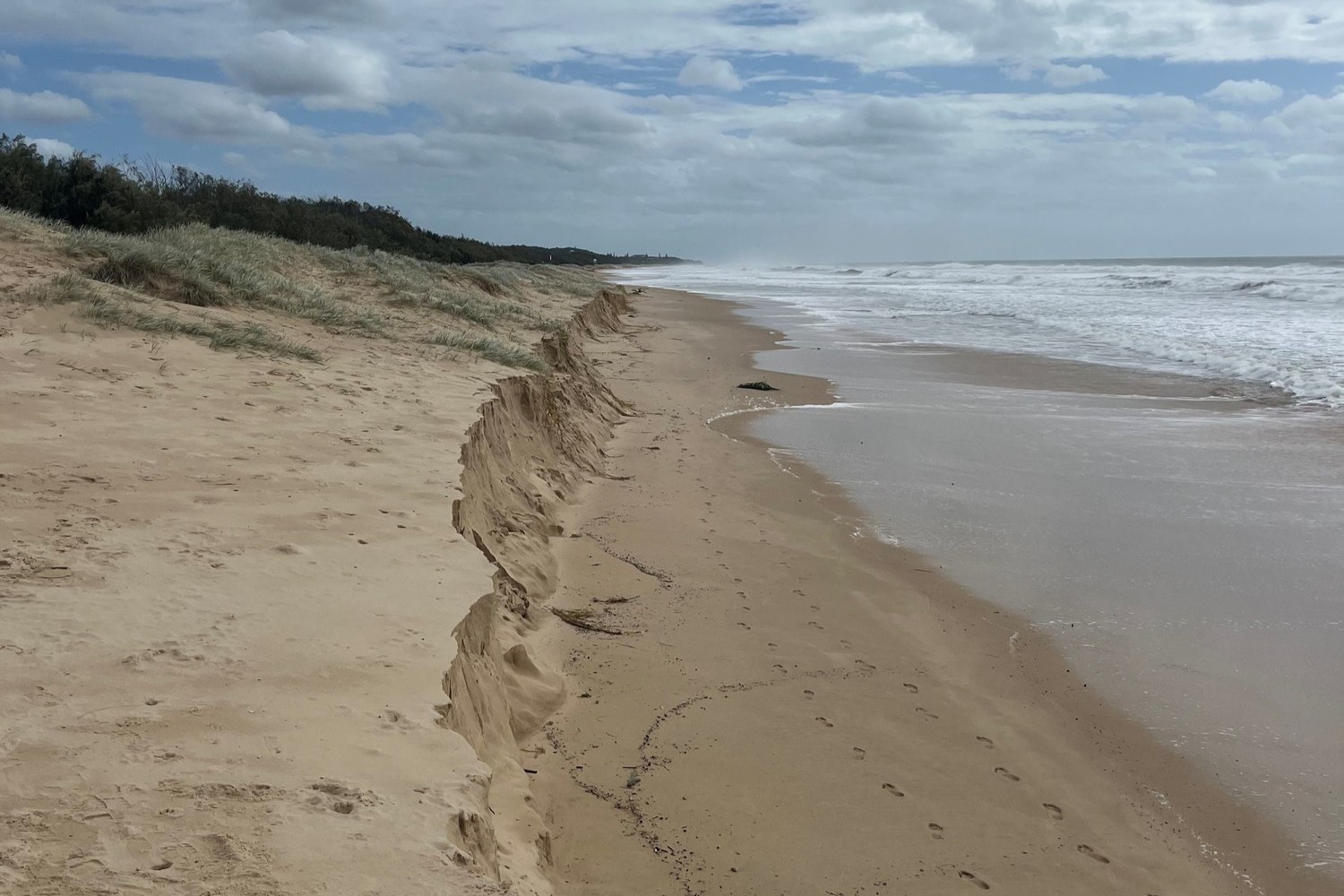
The recuperation has started.
“We are prioritising clearing access at surf lifesaving towers to ensure emergency vehicles can get through,” the spokesperson said.
“Next, we’ll check other vehicle access points along the coastline for emergency use if needed.”
Five beach access points that were closed as a result of the wild weather have been reopened, including 73, 103, 113, 224 and 246.
“(But) significant erosion and continued scarping at BA150 is hindering efforts to maintain access for lifeguard services,” the spokesperson said.
“We are working with them to attempt to gain safe access, however high tides are impeding effectiveness of work.”
Meanwhile, the seawall at Moffat Beach has been walloped.
“It is showing signs of movement due to the large swells impacting the wall,” the spokesperson said, before warning people to steer clear.
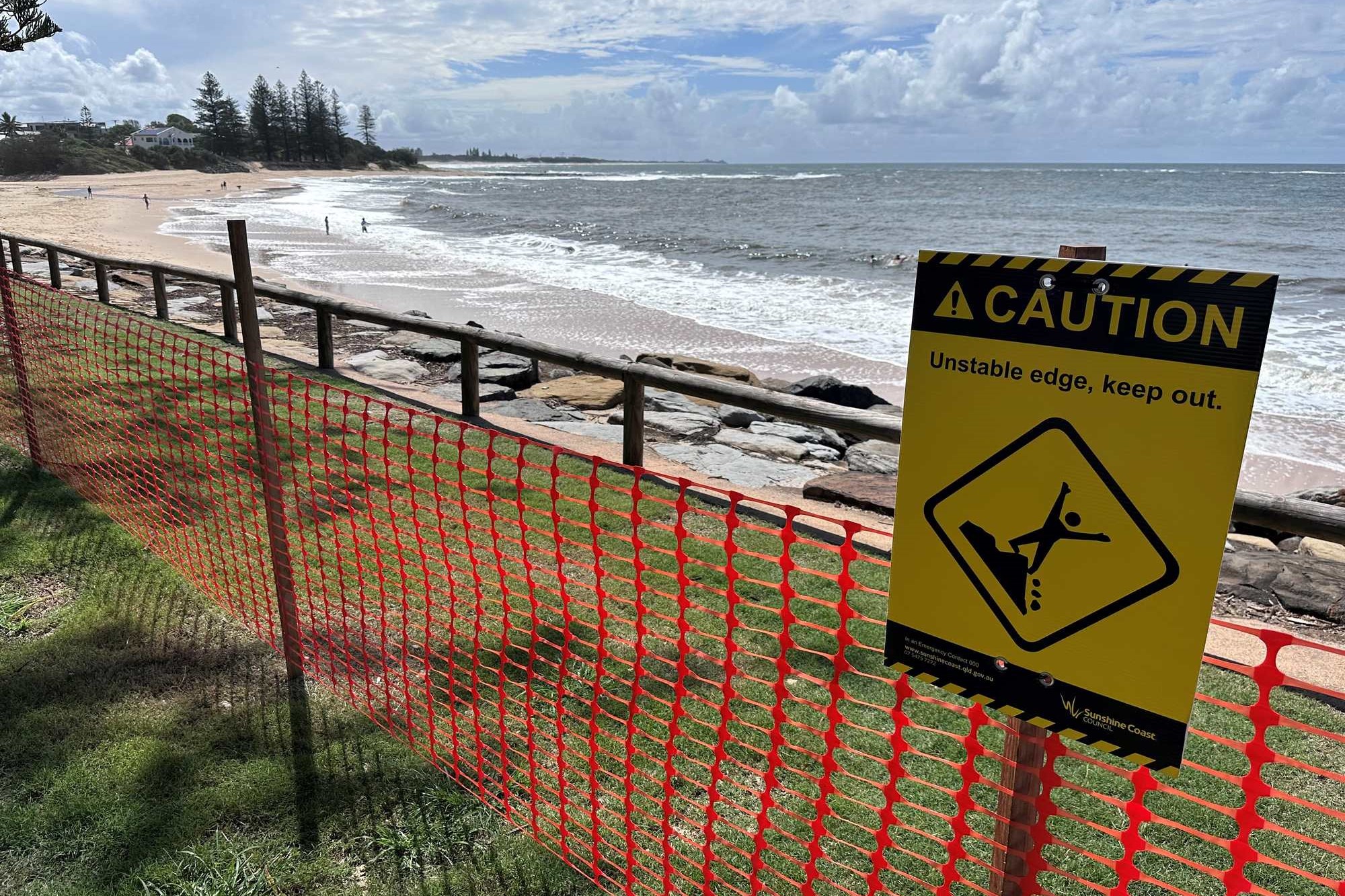
“There is a significant risk of the wall deteriorating further and if that occurs, rock falls and movements are highly likely.”
There were also impacts at low-lying Golden Beach and Pelican Waters, after there were serious concerns about flooding.
“Increased water levels during the event overtopped some seawalls,” the spokesperson said.
“Impacts were generally along the southern foreshore areas and caused some damage.
“There is minor erosion in front of the car park at the Power Boat Club boat ramp and sand accumulation under the pontoon at that location.
“Erosion was evident on the foreshore adjacent to Fraser Park (and) debris (has been) removed from coastal infrastructure like boat ramps, jetties and pathways.”
The spokesperson said council was monitoring debris on beaches.
“It is illegal to remove organic debris from beaches, foreshores and waterways unless it creates an immediate public safety hazard. We encourage the community to report any waste that has washed ashore,” they said.
“If you see any large items that need to be removed, please lodge a request via the Sunshine Coast app.”
Locals will also be able to help clean up local beaches with local community groups, via cleanup.org.au/community.
The spokesperson also urged people to be wary of adversely affected water.
“Heavy rainfall and floodwater can also wash disease-causing microorganisms (germs) and pollutants into waterways, which can cause illness,” they said.
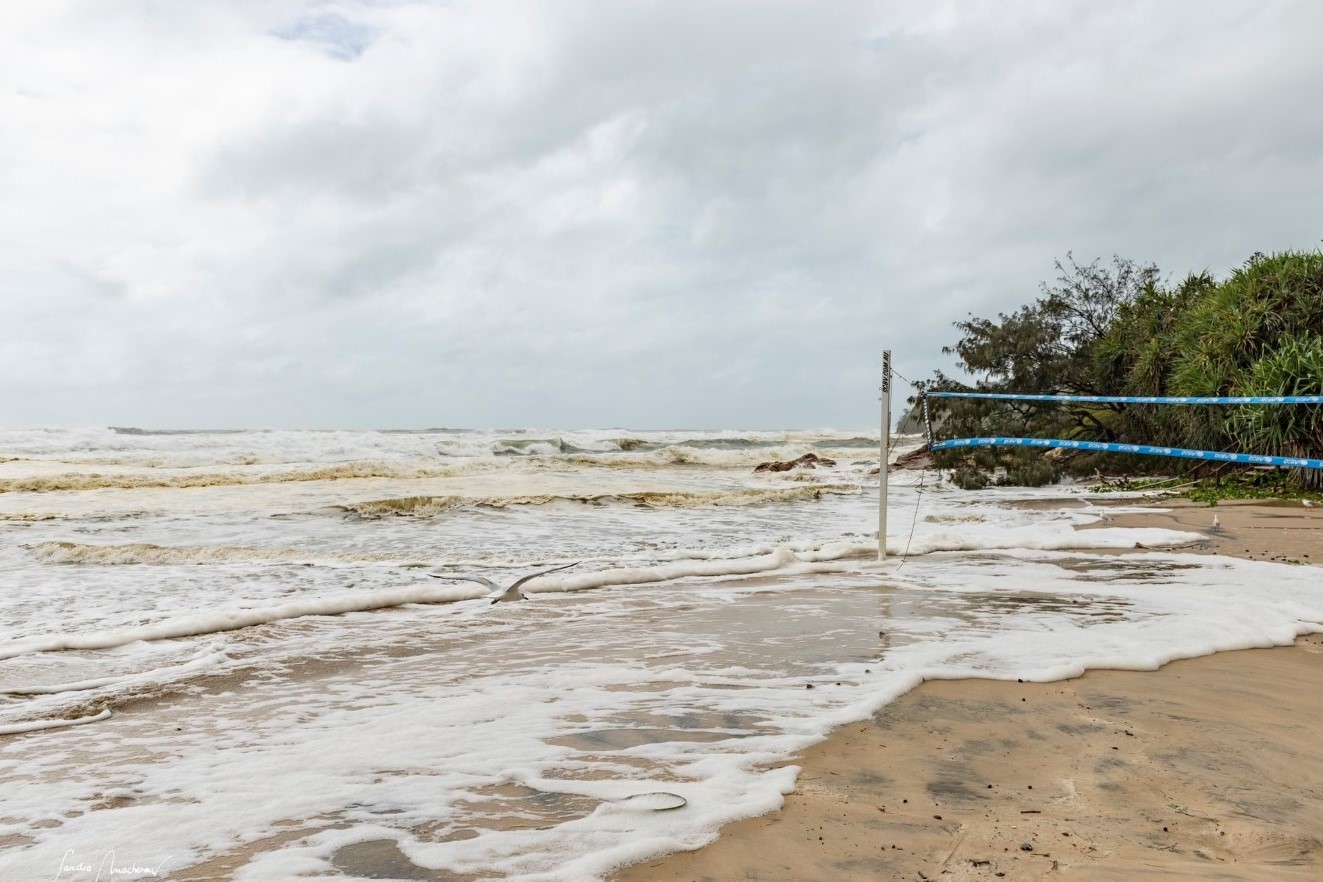
“Please avoid dangerous areas and follow the direction of lifeguards and any onsite signage.”
The spokesperson said the beaches “will eventually repair themselves”.
“However, depending on future weather conditions, they could take some time to return to their pre-Alfred beach profiles,” they said.
“No emergency nourishment is planned at this stage.
“We ask the community to stay off the dunes to allow this natural regeneration process to occur. These dunes may look stable but they can collapse suddenly, putting people at serious risk.”


